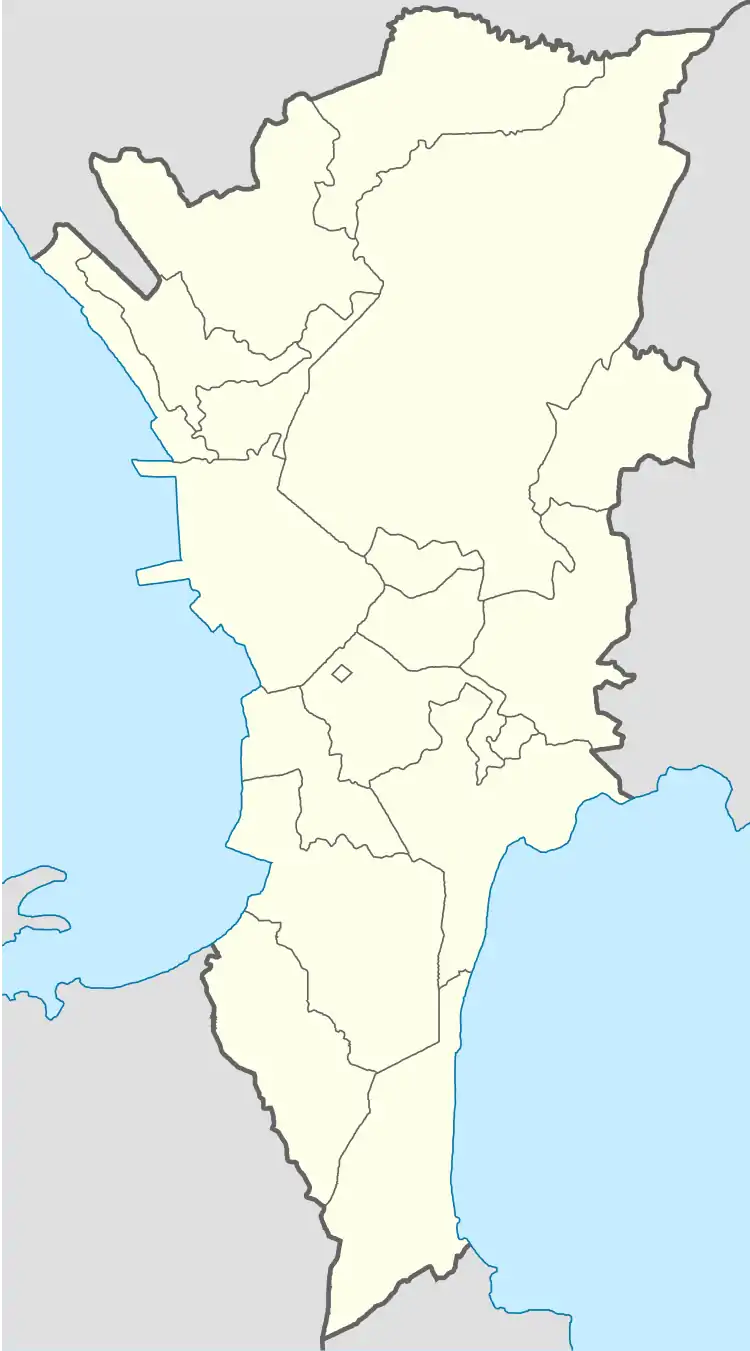Santa Ana Heritage Zone
The Santa Ana Heritage Zone is a portion of the district of Santa Ana, Manila, Philippines, that was declared a heritage zone in 2014 by the National Historical Commission of the Philippines (NHCP). A larger portion of district was previously declared a histo-cultural heritage/overlay zone by the city government of Manila in 2011.
| Santa Ana Heritage Zone | |
|---|---|
_in_Santa_Ana%252C_Manila.jpg.webp) Facade of the Santa Ana Church | |
| Type | Heritage Zone |
| Location | Santa Ana, Manila |
| Coordinates | 14°34′49.1″N 121°0′45.0″E |
| Governing body | National Historical Commission of the Philippines |
 Location of Santa Ana Heritage Zone in Metro Manila .svg.png.webp) Santa Ana Heritage Zone (Philippines) | |
Among the heritage structures in the zone is the Lichauco Heritage House, a residential building that was declared a heritage house by the National Historical Commission of the Philippines on July 10, 2010,[1][2] and the Santa Ana Church, which houses two National Cultural Treasures declared by the National Museum of the Philippines: the Camarín de la Virgen, a chapel room located behind the church altar which contains the oldest dateable oil paintings in the country,[3] and the Santa Ana Site Museum,[4] which contains archaeological objects discovered by excavations conducted by the National Museum in 1966.[5]
Heritage designation
Owing to its historic nature and archaeological value, the city council of Manila passed Ordinance no. 8244 on September 22, 2011, declaring a portion of Santa Ana a histo-cultural heritage/overlay zone (O-HCH).[6][7] This zone is bounded by Philippine National Railways on the north, Pasig River on the east, Del Pan Street on the south, Tejeron Street on the southwest, and Carreon Street on the west.[7] This declaration by the city government is a requirement for it to be declared a heritage zone by the National Historical Commission of the Philippines.[7]
On May 12, 2014, the Board of the NHCP approved Resolution No. 01, S. 2014, which declared a smaller portion of Santa Ana a heritage zone, under the provisions of Republic Act No. 10066, or the National Cultural Heritage Act.[3] Among the many reasons mentioned by the NHCP in support of its declaration is the historicity of the area as the site where Lakan Tagkan ruled (see Namayan), the location of Panday Pira's foundry for cannon-making, the Santa Ana Church, and various other structures, including Jesuit retreat houses, a Taoist temple, and a sacred well.[3]
Issues
In 2013, a real estate developer started excavation works for the construction of a residential condominium tower within the histo-cultural heritage/overlay zone. The National Museum claimed that the developer did not perform an Archaeological Impact Assessment (AIA) which is required by the National Cultural Heritage Act while a local heritage group tried to stop the excavation. The site was inspected in 2014 which uncovered damaged pieces of pottery and other artifacts.[6]
See also
References
- Francisco, Katerina (23 November 2013). "Fighting to preserve heritage in Santa Ana, Manila". Rappler. Rappler Inc. Retrieved 28 November 2017.
- Gamil, Jaymee T. (20 December 2010). "Pre-war Santa Ana home now a heritage house". Philippine Daily Inquirer. Archived from the original on 6 October 2014. Retrieved 29 November 2017.
- "Resolution No. 01, S. 2014: Declaring a Portion of the District of Santa Ana, Manila a Heritage Zone". National Historical Commission of the Philippines. 12 May 2014.
- "Presidential Decree No. 260, s. 1973". Official Gazette. Republic of the Philippines. 1 August 1973. Retrieved 29 November 2017.
- Fox, Robert B.; Legaspi, Avelino (1977). Excavations at Santa Ana. Manila: National Museum of the Philippines.
- Macas, Trisha (26 September 2014). "Santa Ana, Manila residents cry for help to protect the heritage district". GMA News Online. GMA News and Public Affairs. Retrieved 28 November 2017.
- Gamil, Jaymee T. (17 August 2011). "Manila councilors declare Sta. Ana a heritage zone". Philippine Daily Inquirer. Retrieved 29 November 2017.